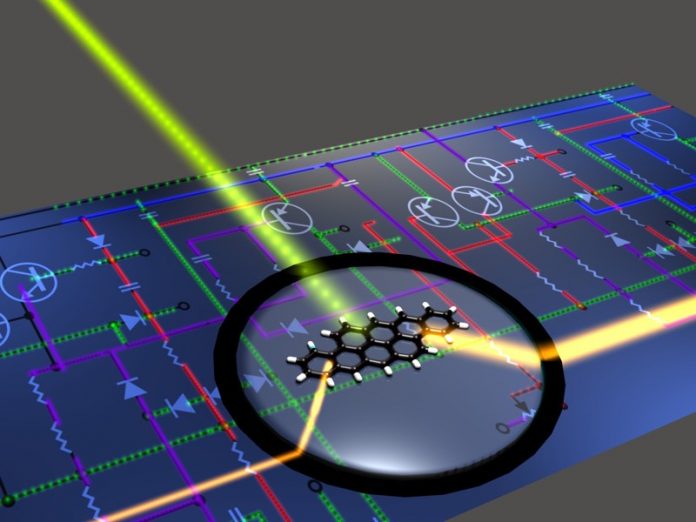Australian scientists have created a device which can increase the speed of the internet by up to 100 times by harnessing twisted light beams to carry more data and process it faster.
Broadband fibre-optics carry information on pulses of light, at the speed of light, through optical fibres. But the way the light is encoded at one end and processed at the other affects data speeds.
The new nanophotonic device, announced today in the journal Nature Communications, encodes more data and processes it faster by using a special form of twisted light.
Dr Haoran Ren from RMIT’s School of Science, co-lead author of the paper, says a tiny nanophotonic device for reading twisted light is the missing key to super-fast, ultra-broadband communications.
“Present-day optical communications are heading towards a capacity crunch as they fail to keep up with the ever-increasing demands of Big Data,” says Ren.
“What we’ve managed to do is accurately transmit data via light at its highest capacity in a way that will allow us to massively increase our bandwidth.”
Current fiber-optic communications, such as that used in Australia’s NBN, use only a fraction of light’s actual capacity by carrying data on the colour spectrum.
Broadband technologies under development use the oscillation, or shape, of light waves to encode data, increasing bandwidth by also making use of the light we cannot see.
This latest technology carries data on light waves that have been twisted into a spiral to increase their capacity. This is known as light in a state of orbital angular momentum, or OAM.
In 2016 the same group from RMIT’s Laboratory of Artificial-Intelligence Nanophotonics published a research paper in the journal Science describing how they’d managed to decode a small range of this twisted light on a nanophotonic chip.
But technology to detect a wide range of OAM light for optical communications hasn’t been viable until now.
Professor Min Gu, Associate Deputy Vice-Chancellor for Research Innovation and Entrepreneurship at RMIT, says the materials used in the device are compatible with silicon-based materials use in most technology, making it easy to scale up for industry applications.
“Our OAM nano-electronic detector is like an ‘eye’ that can ‘see’ information carried by twisted light and decode it to be understood by electronics,” he says.
“This technology’s high performance, low cost and tiny size makes it a viable application for the next generation of broadband optical communications.
“It fits the scale of existing fibre technology and could be applied to increase the bandwidth, or potentially the processing speed, of that fibre by over 100 times within the next couple of years. This easy scalability and the massive impact it will have on telecommunications is what’s so exciting.”
The paper Angular-momentum nanometrology in an ultrathin plasmonic topological insulator film was co-lead authored with Dr Zengji Yue, Associate Research Fellow at University of Wollongong.








